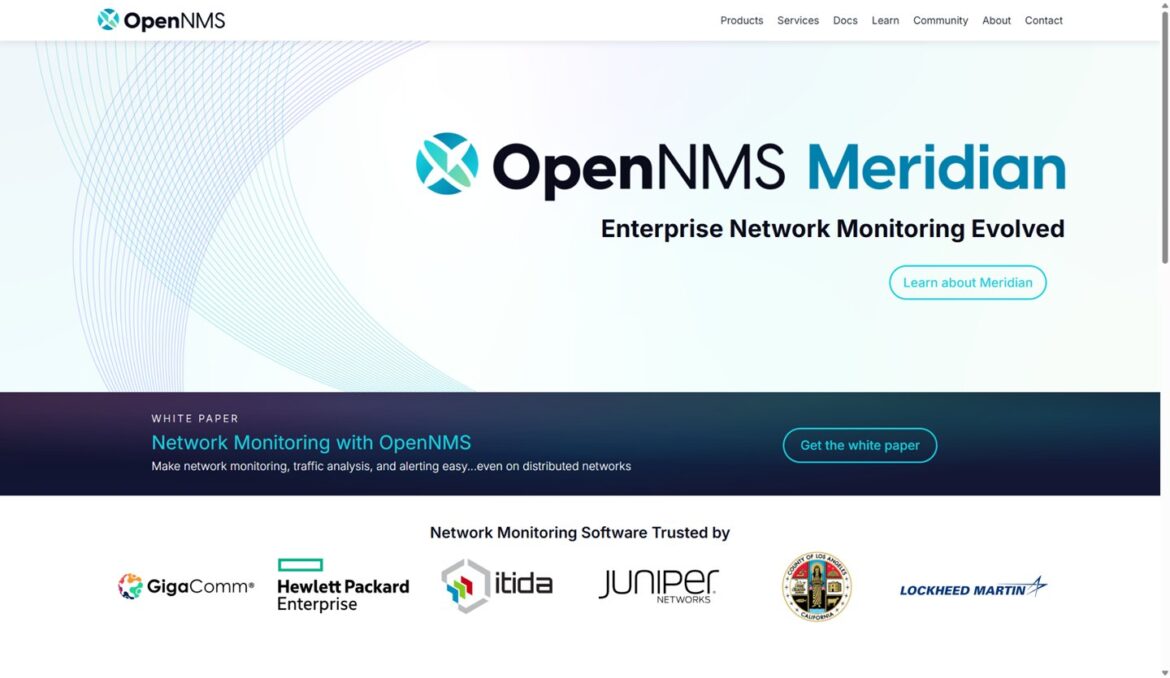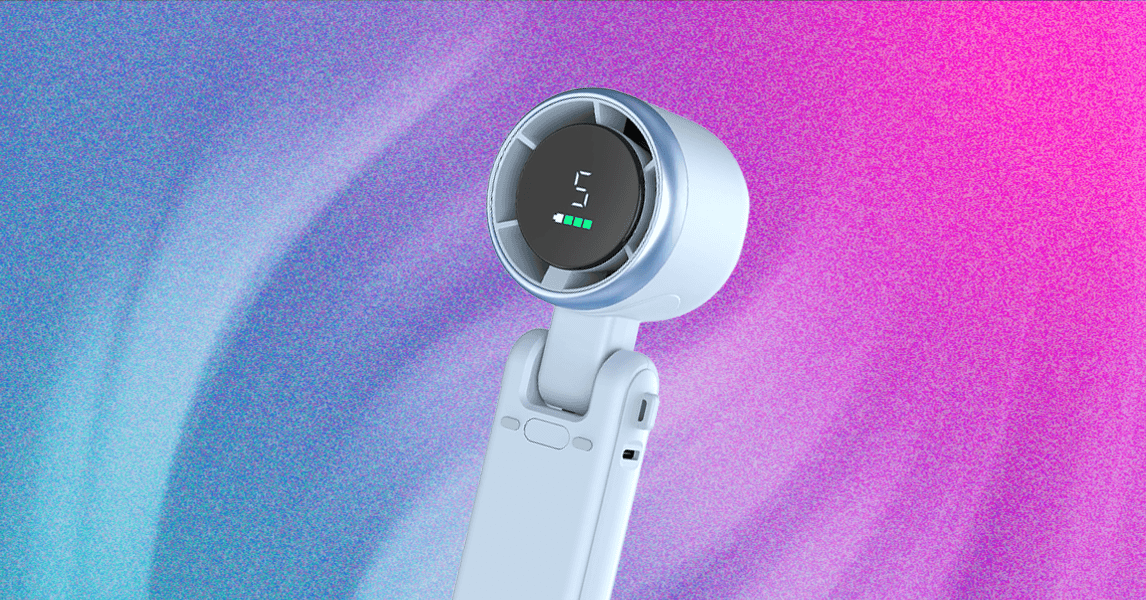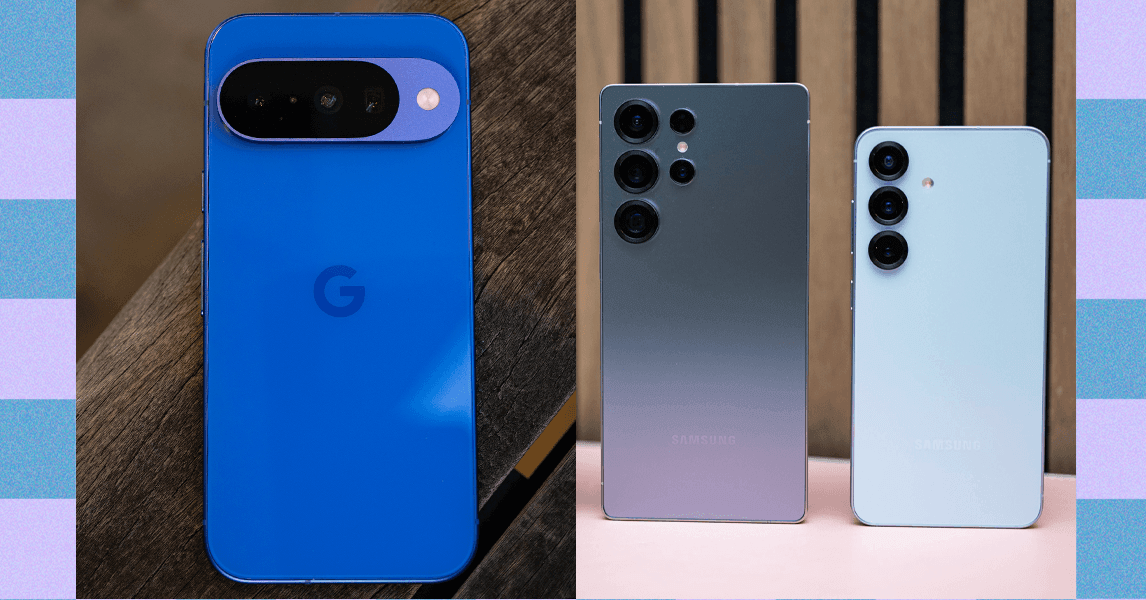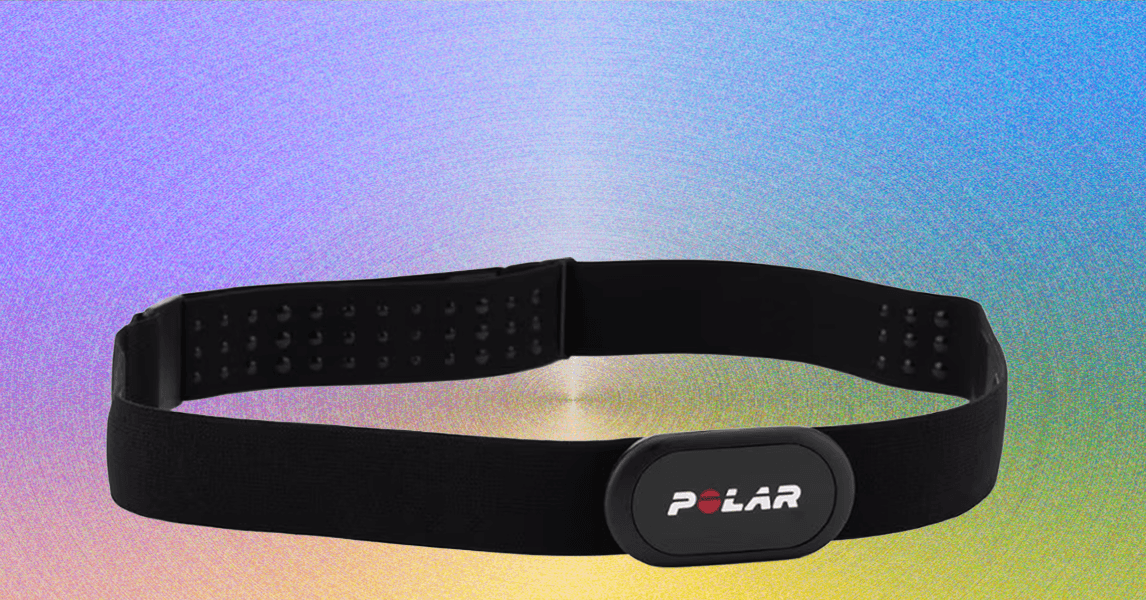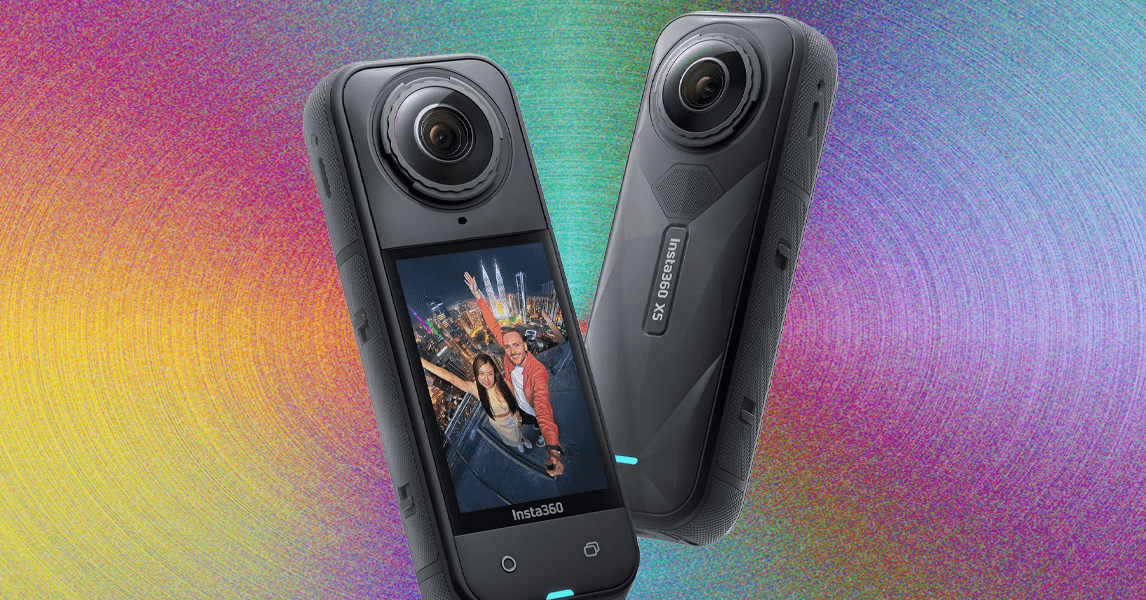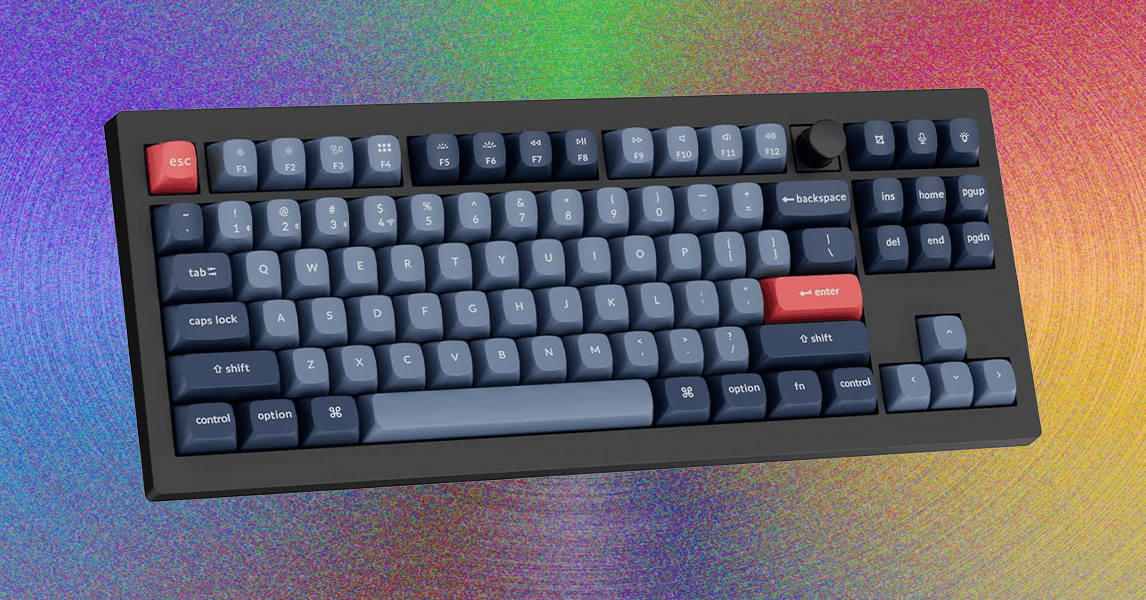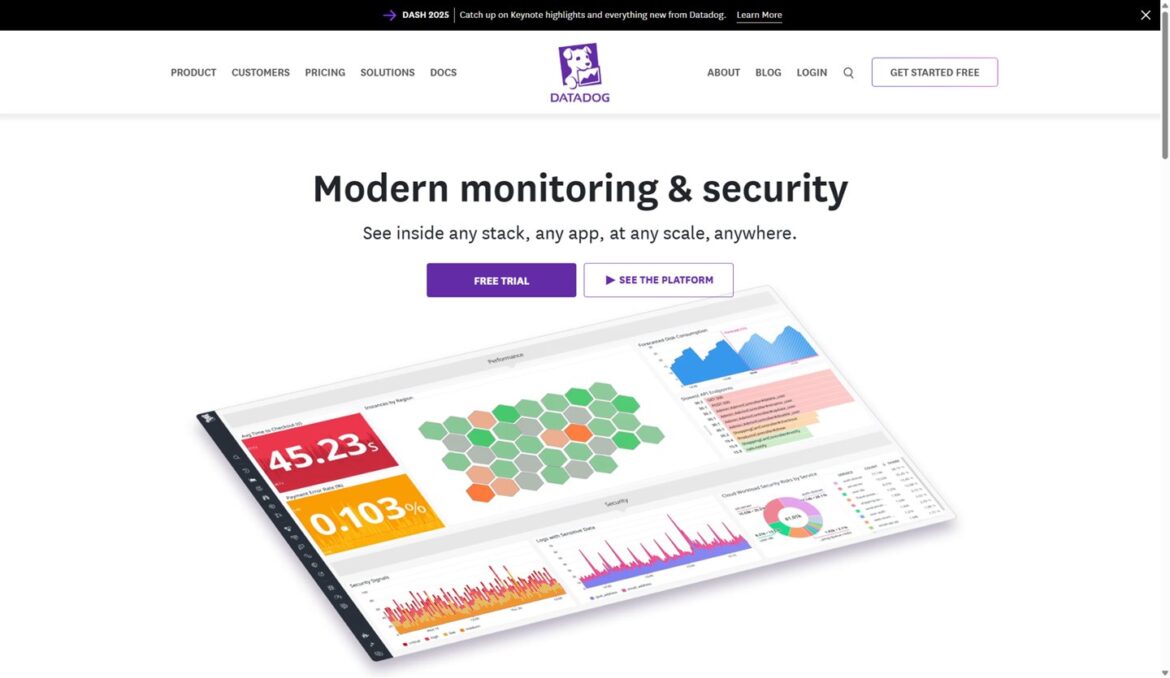Why you can trust TechRadar
We spend hours testing every product or service we review, so you can be sure you’re buying the best. Find out more about how we test.
OpenNMS has carved out a solid position in our best network monitoring tools roundup as a compelling open-source alternative to commercial solutions. The platform offers two distributions — Horizon for rapid innovation and Meridian for enterprise stability, both completely open source. You’ll find comprehensive fault, performance, and traffic monitoring capabilities that rival expensive proprietary tools.
Techradar reviewers spend several weeks researching each major IT platform in the market. We found that OpenNMS excels at handling large-scale networks, with Fortune 500 companies using it to monitor tens of thousands of devices. While LogicMonitor remains our pick for the best network monitoring tool of 2025, OpenNMS delivers exceptional value for teams with strong technical skills.
OpenNMS: Features
OpenNMS packs an impressive array of monitoring capabilities that rival commercial platforms costing thousands more. You get comprehensive network discovery, fault detection, performance monitoring, and traffic analysis in a single platform.
The feature set is well-suited for large enterprises and technical teams who need deep customization options. While some competitors offer more polished interfaces, OpenNMS compensates with raw power and flexibility. At $44,100 annually for enterprise support, the pricing reflects the platform’s enterprise-grade capabilities.
Network discovery and auto-discovery
OpenNMS automatically discovers devices across your network using industry-standard protocols like SNMP, HTTP, and JDBC. You can configure discovery ranges and let the platform map your entire infrastructure without manual intervention. The system integrates with over 2,000 networking vendors, ensuring compatibility with your existing hardware.
Fault management and alerting
The platform excels at fault detection with intelligent path outage analysis. Instead of flooding you with alerts when a core device fails, OpenNMS sends a single notification for the root cause. You may also appreciate features like escalation policies and contact groups that ensure the right people get notified at the right time.
Performance monitoring and graphing
Real-time performance data collection covers everything from CPU utilization to custom metrics. OpenNMS generates comprehensive graphs that integrate beautifully with Grafana for advanced visualization. The system handles up to 300,000 data points per second, making it suitable for the largest enterprise networks.
Flow analysis and traffic monitoring
Built-in support for NetFlow v5/9, IPFIX, and sFlow provides deep traffic analysis capabilities. You can track bandwidth utilization, identify top talkers, and analyze traffic patterns across your entire network. This feature alone justifies the platform for many organizations.
Business service monitoring
OpenNMS maps network performance to business services, helping you understand how technical issues impact operations. You can create custom service definitions and track their health across multiple network components. This business-focused approach sets OpenNMS apart from basic monitoring tools.
(Image credit: OpenNMS)
OpenNMS: Ease of use
OpenNMS demands significant technical expertise, and you’ll need to invest time learning its configuration approaches. The web interface handles basic tasks, but advanced features require editing XML files and command-line work. We found the learning curve particularly steep for teams coming from simpler monitoring tools. However, once you master the basics, the platform’s flexibility becomes a major advantage.
The interface itself feels dated compared to modern alternatives like LogicMonitor or Datadog. You’ll spend time navigating between different sections to accomplish tasks that other platforms handle in single dashboards. OpenNMS has acknowledged this limitation and continues improving the web UI, but significant configuration work still happens outside the browser. The rigorous community documentation helps, but expect weeks of learning before you’re fully productive.
OpenNMS: Pricing
Swipe to scroll horizontally
Plan
Starting price (paid annually)
What’s included
Horizon (Community)
Free
Open source version, community support, all core features
Meridian Core
Contact for pricing
Basic enterprise features, email support
Meridian Essential
Contact for pricing
Installation consulting, guaranteed SLAs, regular support
Meridian Premier
Contact for pricing
Enhanced SLAs (2hr critical response), priority support
Meridian Premier+
Contact for pricing
1hr critical response, 24/7 support options
Row 5 – Cell 0 Row 5 – Cell 1 Row 5 – Cell 2
OpenNMS offers an attractive pricing structure with a completely free open-source option that includes all core monitoring features. But the jump to enterprise support is significant at about $44,100 annually, which gives you installation consulting and guaranteed response times.
This pricing model works well for organizations that either have strong internal expertise (free version) or can afford to pay for the enterprise-grade support guarantees. Compared to competitors like LogicMonitor starting at $375 monthly, OpenNMS provides better value for large deployments where per-device pricing becomes expensive.
OpenNMS: Customer support
OpenNMS provides tiered support options ranging from community forums to enterprise-grade SLAs. The free community version relies on extensive documentation and active user forums. You’ll find helpful resources, but response times depend on community availability. They also maintain a detailed knowledge base and video tutorial tfor common issues.
Enterprise customers get dedicated support portals with guaranteed response times. Critical issues receive 1-4 hour responses depending on your plan, with business-hours coverage standard across paid tiers. Support tickets integrate with internal development processes, ensuring bug fixes and enhancements get proper attention. However, enhancement requests don’t carry SLA guarantees, which may frustrate teams expecting rapid feature development.
OpenNMS: Alternatives
OpenNMS occupies a unique position as the most capable open-source network monitoring platform, competing directly with commercial giants like SolarWinds and PRTG. You’ll find it particularly valuable if you need enterprise-scale monitoring without per-device licensing costs. The platform works best for large organizations with dedicated network teams who can invest time in proper configuration and customization.
Key competitors include LogicMonitor for cloud-native environments, Datadog for application-focused monitoring, and Nagios for simpler network oversight. OpenNMS differentiates itself through comprehensive flow analysis, business service mapping, and the ability to handle massive device counts without licensing restrictions. However, teams wanting plug-and-play simplicity should consider commercial alternatives that prioritize ease of use over raw functionality.
OpenNMS: Final verdict
OpenNMS delivers exceptional value for organizations willing to invest in proper implementation and training. You get enterprise-grade monitoring capabilities that rival solutions costing significantly more, plus the flexibility that comes with open-source software. The platform works best for sprawling networks where customization and scalability matter more than interface polish.
However, you shouldn’t underestimate the learning curve and ongoing maintenance requirements. Small teams or organizations lacking dedicated network expertise may find commercial alternatives more cost-effective when factoring in implementation time. For the right use case, technical teams monitoring large, diverse networks — OpenNMS represents one of the best values in enterprise monitoring.
FAQs
What’s the difference between OpenNMS Horizon and Meridian?
Horizon is the community version where new features are developed and tested rapidly, making it ideal for organizations wanting the latest capabilities. Meridian focuses on long-term stability with enterprise support options, receiving thoroughly tested features after they’ve proven stable in Horizon deployments.
Can OpenNMS monitor cloud infrastructure and hybrid environments?
Yes, OpenNMS supports distributed monitoring through Minion collectors that can be deployed in remote locations or cloud environments. You can monitor AWS, Azure, and other cloud services alongside traditional on-premises infrastructure from a single platform.
How does OpenNMS licensing work for commercial use?
The core OpenNMS software is completely open source and free for commercial use. You only pay for enterprise support, consulting services, and additional commercial components if needed. There are no per-device licensing fees, making it cost-effective for large deployments.
What level of technical expertise is required to implement OpenNMS?
You’ll need solid networking knowledge and Linux administration skills for successful deployment. While basic monitoring can be configured through the web interface, advanced features require XML editing and command-line configuration. Plan for several weeks of learning and configuration time.
Does OpenNMS integrate with other IT management tools?
OpenNMS offers extensive integration capabilities through its REST API, supporting connections with ticketing systems like Jira, messaging platforms, and visualization tools like Grafana. The platform can also integrate with configuration management systems and other network tools through various protocols and APIs.
We list the best website defacement monitoring service.

